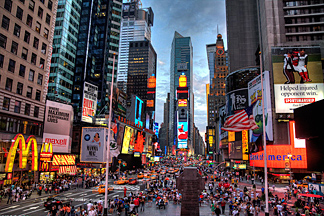Cannabis prohibition: Has it made cannabis more dangerous?

Perhaps one of the most commonly raised topics regarding cannabis reform is that the plant may induce psychosis symptoms.
Of course, scientists are proving the cynics wrong as they unlock cannabis’ medicinal potential, such as its ability to actually combat psychosis with a unique therapeutic non-psychoactive cannabinoid called Cannabidiol or CBD.
Thankfully, more places on the map are starting to legalize weed, but prohibition remains an issue in certain states and most countries. While some might think it necessary to forbid people to access to a plant that is known for its mind-altering effects, cannabis prohibition seems to have done more harm than good.
Below are some examples of the ways in which cannabis prohibition has impacted states with tight regulations on weed:
- Patients struggle from poor access to controlled medications – Cannabis is being used to treat a wide variety of medical conditions, including cancer, nausea, chronic pain, PTSD and epilepsy. The list is ever-growing and for many medical cannabis patients, there is no better alternative. Weed is non-addictive, it is natural and it can be consumed in myriad ways. However, cannabis prohibition has restricted people’s ability to procure controlled medications.
- Arguments for drug law reform erupt – Banning cannabis sale, consumption and distribution is something that has acted as a catalyst for debate. As a plant with medicinal properties that can benefit the young and old, it seems pretty barbaric that cannabis is classed as a Schedule 1 drug under the U.S. federal law. In-need patients who are stranded in states that forbid the use of weed have been pushed to the point of protesting for legal weed. Pro-drug reform groups, such as New Jersey United for Marijuana Reform (NJUMR), have launched as a direct effect of cannabis prohibition. Although nobody likes an argument, heated debates about cannabis reform are making waves of change, what with recreational cannabis now being legal in nine states and medical cannabis in 30.
- Black market activity is stimulated – If the government isn’t going to provide members of the public with cannabis, who is? Their dealers, of course. Cannabis prohibition doesn’t exactly stop consumers from enjoying their daily joint, vape or batch of edibles. Rather, it prompts them to seek out cannabis products elsewhere. Enter the “black market,” where weed is unregulated and quality control checks are non-existing. Black market activity stimulates corruption and further adds to the stigma that enshrouds the topic of weed. Whereas if the U.S. government legalized it, black market dealers would struggle to make ends meet.
- Increased risk of children being enticed into the illegal drug trade – Wouldn’t it be wiser to encourage children to work in a legal cannabis trade, rather than leaving the illegal cannabis trade to thrive in the absence of legalization? Prohibition puts children at risk of being lured into black market behavior. If the plant was legalized, kids wouldn’t need to even consider buying bud from the black market.
- Consumer costs are driven up – Prohibiting cannabis sale, consumption and distribution means that consumers must give up weed or find another source. With no competition, black market dealers can charge how much they want. What’s more, for those people who don’t want to break the law in order to get their daily dose, the only option might be to visit a cannabis-friendly state to procure their pot, an expensive mission.
- Illicit cannabis operations leave a negative environmental impact – Last but not least, the environmental impact of cannabis prohibition. Cannabis growers who operate outside of the law will not be so cautious about their carbon footprint as, let’s say, a licensed cannabis dispensary in Colorado. Black market cannabis cultivators are only out to accomplish one thing: make money. Instead of investing in high-grade eco-friendly growing solutions, illegal cannabis growers consume heaps of electricity for heat and ventilation. In addition to this, illicit weed cultivators may use chemical pesticides and/or fertilizers to maximize their yields; chemicals that can kill wildlife.









